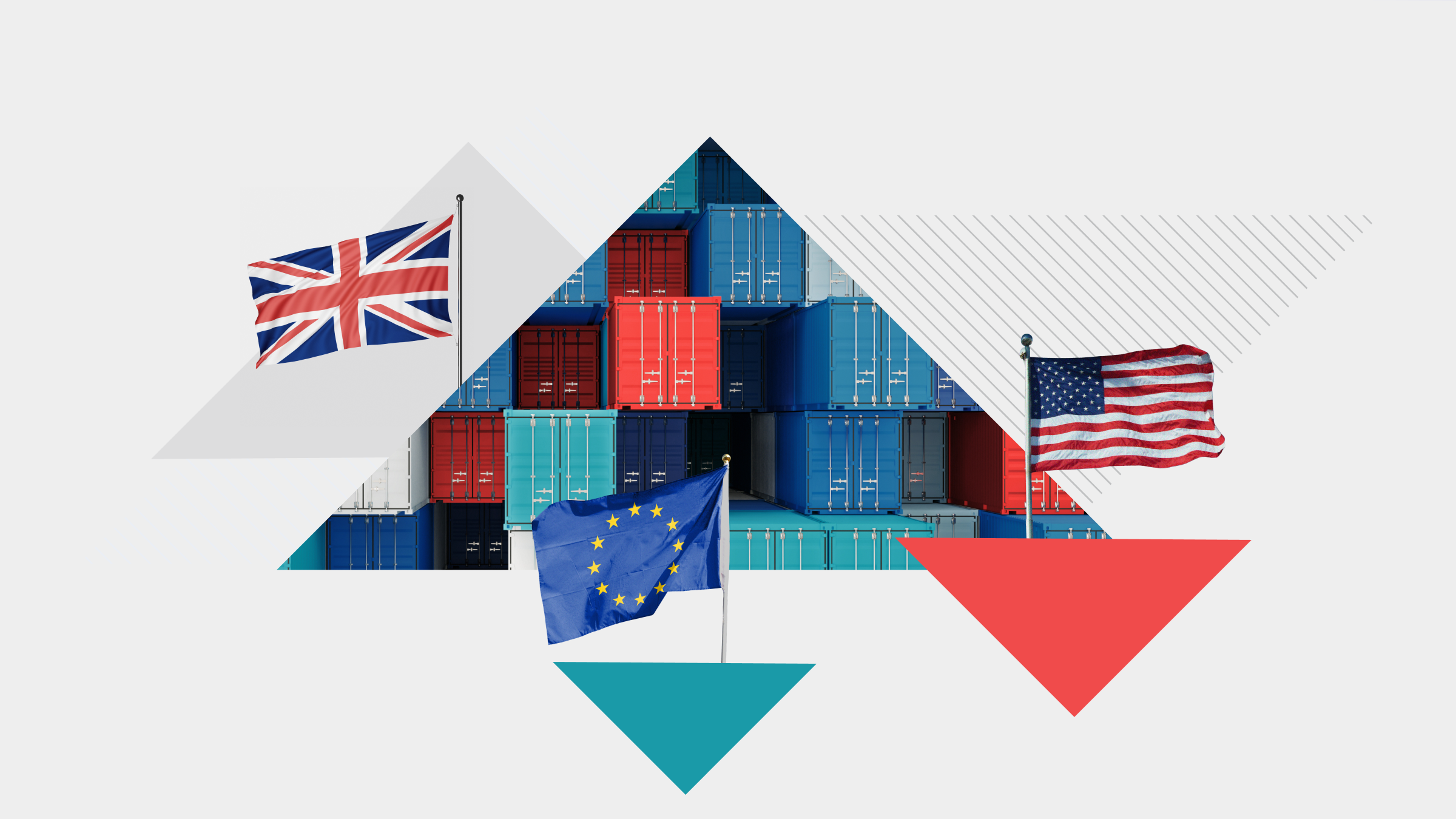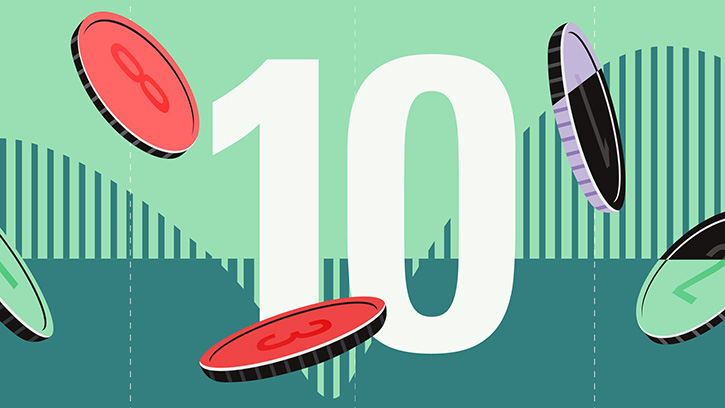Rolle im Portfolio
The UBS ETF (CH) - SMI provides exposure to Swiss large cap stocks, some of which are also the biggest in Europe. As such, this fund can be used as a core holding, but investors should be aware of the peculiarities of the underlying index. The SMI is extremely top heavy, with the top three constituents, namely Nestle, Novartis and Roche, accounting for about 60% of the index’s value. This inevitably results in high sector concentration, with healthcare accounting for 39-42% of the index's value, while consumer goods and financials combined represent another 43-45%.
This fund can also be implemented as a tactical tool to overweight Swiss large cap equities within a diversified portfolio.
Additionally, for non-Swiss investors, this fund can serve as a diversifier within a broad pan-European portfolio by providing exposure to the Swiss franc, one of the world’s most stable and strongest currencies. However those investors should be mindful that while a strengthening franc will enhance the return of this fund as denominated in their home currencies, a weakening franc will weigh on its performance as measured in their home currency.
Fundamentale Analyse
Buoyant worldwide demand for Swiss goods supported Switzerland’s economy after the financial crisis, until the appreciation of the Swiss franc--driven by its safe haven status--became a problem, threatening to thwart growth and sink the country into sustained deflation. The persistent strength of the franc prompted the Swiss National Bank (SNB) to set the minimum exchange rate to the euro at 1.20 in September 2011. This FX peg was dropped in January 2015. The decision was taken in anticipation of the European Central Bank (ECB)’s quantitative easing (QE) programme unveiled a few days later, which would have made the cap too costly to sustain.
The SMI index fell 15% on the news but has since recovered. The Swiss franc, however, has been trading 10% higher against the euro, as of this writing. The big question now is how much the stronger franc will affect Swiss companies going forward. Companies like Swatch and Richemont, which generate most of their sales outside Switzerland but manufacture domestically, are expected to be hit the hardest. The profitability of Swiss banks, including UBS, Credit Suisse and Julius Baer, should also be under pressure as they too have expenses disproportionately in francs relative to their revenues, which are more driven by client assets denominated in other currencies, such as the euro and dollar.
Another source of risk for Swiss equities is China. Swiss companies have increased their exports to China and are now more dependent than ever on its economic growth. The world’s No 2 economy continues to post robust growth rates of around 7%, but this is lower than what the world had become accustomed to.
By contrast, macroeconomic conditions are improving in Europe. Growth in the Eurozone is expected to accelerate, helped by the ECB’s QE programme, lower energy prices and a weaker euro.
Overall, it should be noted that the SMI consists of many high-quality companies that boast sustainable competitive advantages, or wide “economic moats”, by virtue of having either exclusive patents or well-recognised brand names. These include not only multinationals like Nestle, Richemont or Swatch, but also defensive heavyweights Novartis and Roche which are able to maintain a competitive advantage with their portfolio of patented drugs and robust R&D budgets, which support new drug discovery.
Indexkonstruktion
The Swiss Market Index (SMI) is the benchmark index of the Swiss stock market. It is a free-float-adjusted index that comprises 20 of the largest and most liquid stocks listed on the Swiss stock exchange. The SMI represents about 85% of the total capitalisation of the Swiss equity market and its composition is examined once a year. The healthcare sector is the most heavily weighted, representing 39-42% of the index's value, followed by consumer goods (26-30%), financials (16-20%) and industrials (8-10%). The index is extremely top heavy, with Novartis and Nestle accounting for 21-25% of the index’s value each. The third largest stock represented is Roche, with a 16-20% weight.
Fondskonstruktion
The fund uses full physical replication to track the performance of the SMI total return index. The fund holds all the securities within the index. Dividends received from the underlying stocks are invested in the index until distribution date. This dividend treatment helps to minimise tracking error. The ETF engages in securities lending to help improve its tracking performance. The amount of securities that can be lent by an ETF at any point in time is capped at 50% of its net asset value (NAV). Lending operations are protected by taking high-quality collateral (e.g. G10 government bonds and equities listed on globally-recognised indices) greater than the loan value. The level of overcollateralisation is set at 105% for bonds and stocks. Cash is not accepted as collateral. Both loan and collateral values are marked-to-marked daily. State Street Bank, who acts as the lending agent, provides full indemnification to the ETF in case of a borrower failure to return the securities. Gross lending revenue is split as follows: 60% to the ETF, 40% to UBS/State Street Bank, with the latter covering all associated operational costs. The net return to the fund was 0.004% for the last 12 months, with 3.9% of the fund’s NAV was lent out on average and a maximum percentage of the total NAV lent on any single day of 24.2%. It is worth noting that this Swiss-domiciled ETF is not compliant with UCITS III and therefore is only authorised for commercial distribution in Switzerland and Liechtenstein.
Gebühren
At 0.20%, the fund charges the lowest total expense ratio (TER) of all the ETFs tracking the SMI. The tracking difference (fund return - index return) over the last three years suggests that the fund's total holding cost per annum is about 0.35% on average. On top of holding costs, ETF investors will typically be charged trading costs, including bid-offer spreads and brokerage commissions, when buy and sell orders are placed for ETF shares.
Alternativen
iShares, db X-trackers and ComStage offer alternative SMI ETFs, albeit at higher TERs.
As an alternative to ETFs tracking the SMI, there is the Amundi MSCI Switzerland ETF, with a TER of 0.25%, and the UBS MSCI Switzerland ETF, which charges a TER of 0.20%. Consisting of 36 stocks, the MSCI Switzerland is larger than the SMI but still very top heavy, with the top 10 names accounting for about 90% of the index and very marginal exposure to the Swiss midcap market.
Those concerned about the high concentration risk embedded in SMI and MSCI Switzerland ETFs and those looking for slightly broader market exposure could consider ETFs that track the SLI instead. It consists of the 30 largest and most liquid stocks on the Swiss equity market and has a capping mechanism. The index weighting of the four largest constituents is limited to 9% and the weighting of all other stocks to 4.5%. As a result, this fund has higher weightings in industrials and basic materials. UBS and db x-trackers provide the cheapest options tracking the SLI (strictly in terms of TER), each sporting a TER of 0.35%.

















